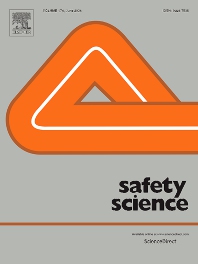Journals in Safety
Journals in Safety
- ISSN: 0925-7535
Safety Science
Safety Science serves as an international medium for research in the science and technology of human and industrial safety. It extends from safety of people at work to other spheres, such as transport, energy or infrastructures, as well as every other field of man's hazardous activities.Safety Science is multidisciplinary. Its contributors and its audience range from social scientists to engineers. The journal covers the physics and engineering of safety; its social, policy and organizational aspects; the assessment, management and communication of risks; the effectiveness of control and management techniques for safety; standardization, legislation, inspection, insurance, costing aspects, human behavior and safety and the like.Papers addressing the interfaces between technology, people and organizations are especially welcome.Safety Science will enable academic researchers, engineers and decision-makers in companies, government agencies and international bodies, to augment their information level on the latest trends in the field, from policy-makers and management scientists to engineers.The journal focuses primarily on original research papers across its whole scope, but also welcomes state-of-the-art review papers and first-hand case histories on accidents and disasters of special significance and discussion papers on hot topics.
- ISSN: 1369-8478
Transportation Research Part F: Traffic Psychology and Behaviour
Supported by the International Association of Applied PsychologyTransporta... Research Part F: Traffic Psychology and Behaviour focuses on the behavioural and psychological aspects of traffic and transport.The aim of the journal is to enhance theory development, improve the quality of empirical studies and to stimulate the application of research findings in practice. TRF provides a focus and a means of communication for the considerable amount of research activities that are now being carried out in this field. The journal provides a forum for transportation researchers, psychologists, ergonomists, engineers and policy-makers with an interest in traffic and transport psychology.Benefits to authors We also provide many author benefits, such as free PDFs, a liberal copyright policy, special discounts on Elsevier publications and much more. Please click here for more information on our author services.Please see our Guide for Authors for information on article submission. If you require any further information or help, please visit our Support Center
- ISSN: 0022-4375
Journal of Safety Research
A Safety and Health Research Forum A Joint Publication of the National Safety Counciland ElsevierThe Journal of Safety Research is a multidisciplinary publication that provides for the exchange of scientific evidence in all areas of safety and health, including traffic, workplace, home, and community. While this research forum invites submissions using rigorous methodologies in all related areas, it focuses on basic and applied research in unintentional injury and illness prevention. Affiliated with the National Safety Council, it seeks to engage the global scientific community including academic researchers, engineers, government agencies, policy makers, corporate decision makers, safety professionals and practitioners, psychologists, social scientists, and public health professionals.
- ISSN: 2213-6657
Analytic Methods in Accident Research
Analytic Methods in Accident Research publishes manuscripts that deal with the development and/or application of innovative statistical and econometric methods to the study of vehicle crashes and other transportation and non-transportation-r... accidents. The intent of the journal is to demonstrate how such innovative methodological approaches can be used to provide new insights and quantification of the factors that affect the frequency and severity of accidents - thus providing new guidance for the implementation of appropriate countermeasures. While the focus of the journal is on the underlying analytic approach, acceptable application areas include all elements of transportation safety (road, pedestrian, air, rail, and water safety), construction safety, and any area of study where the unintended consequences of human behavior, machine failures or system failures result in property damage and/or bodily injury.